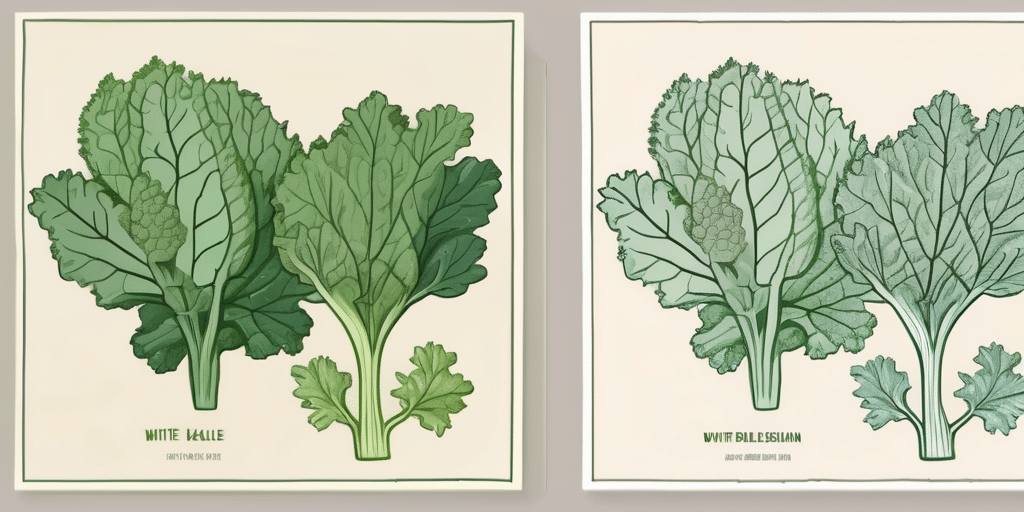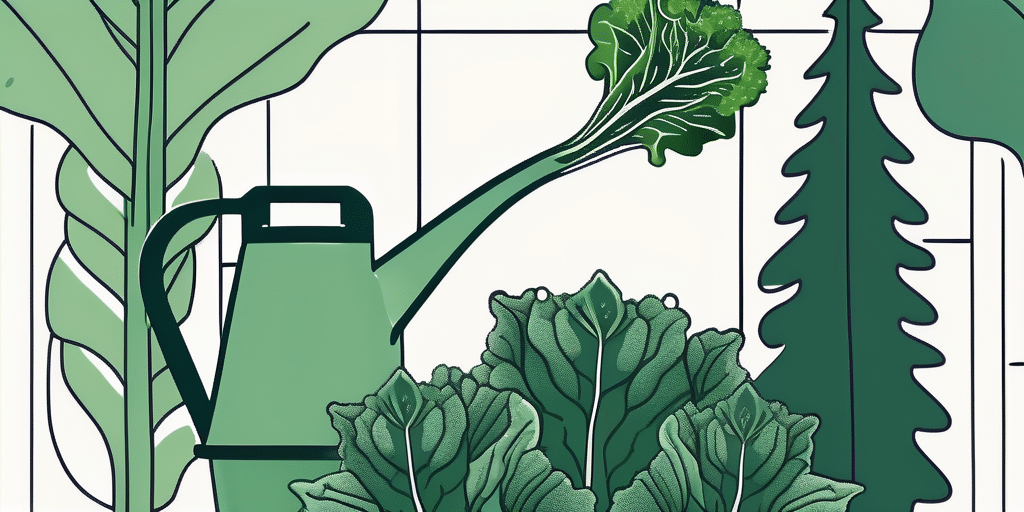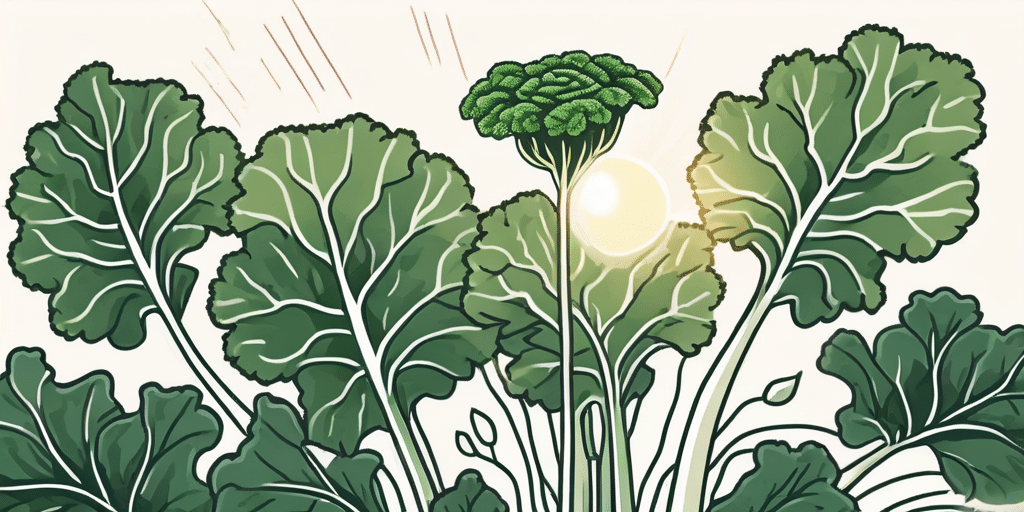Winterbor kale is a popular vegetable that grows well in Maryland’s climate and provides a delicious addition to your garden. Whether you’re an experienced gardener or a beginner, this article will provide you with all the information you need to successfully grow and harvest Winterbor kale in Maryland.
Climate & Hardiness Zones in Maryland
Before we dive into the details of planting and growing Winterbor kale, let’s first understand the climate and hardiness zones in Maryland. Maryland falls within USDA hardiness zones 6a to 8b, which means it experiences a moderate climate with cold winters and hot summers.
If you’re located in the northern part of the state, you are in zone 6a or 6b, where the average minimum temperature ranges from -10°F to 0°F (-23.3°C to -17.8°C). In southern Maryland, specifically the coastal areas, you are in zone 8a or 8b, with average minimum temperatures ranging from 10°F to 20°F (-12.2°C to -6.7°C).
Knowing your specific hardiness zone helps you determine the best time to plant and harvest Winterbor kale in Maryland.
Maryland’s climate is influenced by its proximity to the Atlantic Ocean and the Chesapeake Bay. The state experiences four distinct seasons, with hot and humid summers and cool winters. The coastal areas benefit from the tempering effect of the water bodies, which can result in milder winter temperatures compared to inland regions.
Due to Maryland’s varied topography, microclimates can exist within different regions of the state. For example, areas at higher elevations, such as the Appalachian Mountains in western Maryland, may have cooler temperatures and shorter growing seasons compared to low-lying areas.
When to Plant Winterbor Kale in Maryland
Now that you understand Maryland’s climate and hardiness zones, let’s discuss when to plant Winterbor kale. This cold-hardy vegetable thrives in cool weather, making it an ideal choice for Maryland’s spring and fall seasons.
Here is a step-by-step guide to planting Winterbor kale:
- Start by preparing your soil. Winterbor kale prefers well-drained soil rich in organic matter. Incorporate compost or well-rotted manure into the soil to improve its fertility and drainage.
- Sow the seeds directly in your garden bed or start them indoors 6-8 weeks before the last spring frost. If starting indoors, plant the seeds in seed trays filled with seed-starting mix and keep them in a warm and well-lit area.
- When the soil temperatures reach about 45°F (7°C) in spring, it’s time to transplant your Winterbor kale seedlings outdoors. Space the plants about 12-18 inches apart to allow for proper growth.
- Water your kale plants regularly, ensuring they receive about 1 inch of water per week. Keep the soil consistently moist but not saturated. If possible, mulch around the plants to help retain moisture and suppress weeds.
- Apply a balanced organic fertilizer during the growing season to provide your Winterbor kale with the necessary nutrients. Follow the manufacturer’s instructions for application rates.
- Monitor your plants for pests such as aphids, cabbage loopers, and flea beetles. Handpick any pests you see, and consider using organic pest control methods if necessary.
Now, let’s dive a little deeper into the process of preparing your soil for Winterbor kale. It’s important to note that this variety of kale prefers a pH level between 6.0 and 7.5. If your soil’s pH is too low, you can raise it by adding lime. Conversely, if the pH is too high, you can lower it by adding elemental sulfur. Testing your soil’s pH level is a simple process that can be done with a soil testing kit, which can be purchased at most garden centers.
In addition to adjusting the pH level, it’s also beneficial to add organic matter to your soil. This can be done by incorporating compost or well-rotted manure. Organic matter improves the soil’s fertility, structure, and drainage. It provides essential nutrients for your Winterbor kale plants and promotes healthy root development.
When it comes to watering your kale plants, it’s important to strike a balance. While they require consistent moisture, overwatering can lead to root rot and other issues. To ensure proper watering, consider using a drip irrigation system or watering at the base of the plants to avoid wetting the foliage. This will help prevent the spread of diseases and minimize the risk of fungal infections.
Lastly, let’s talk about the benefits of mulching around your Winterbor kale plants. Mulch helps retain moisture in the soil, reducing the need for frequent watering. It also acts as a barrier, preventing weed growth and competition for nutrients. Organic mulch, such as straw or shredded leaves, is a great option as it breaks down over time, adding organic matter to the soil.
When to Harvest or Pick Winterbor Kale in Maryland
After patiently nurturing your Winterbor kale plants, it’s time to enjoy the bountiful harvest. The great thing about kale is that you can start harvesting the outer leaves while the inner leaves continue to grow.
Winterbor kale, a cold-hardy variety, thrives in the Maryland climate, offering a nutritious addition to your garden. As the temperatures start to drop in the fall, the flavor of Winterbor kale intensifies, becoming sweeter with a hint of nuttiness. The frost-kissed leaves develop a richer taste, making them a sought-after ingredient for hearty soups and stews.
Follow these steps to harvest your Winterbor kale:
- Wait until your kale plants reach about 8-10 inches in height before harvesting. This usually takes around 55-65 days from the date of transplanting.
- Using a sharp pair of garden scissors or a knife, cut the outer leaves of the kale plant, leaving the central bud intact. This allows for continuous growth and harvesting throughout the season.
- As you harvest the leaves, remove any damaged or discolored ones to maintain the plant’s overall health and appearance.
Remember, kale tastes best when picked young and tender. However, if you prefer a more mature and robust flavor, you can leave the plant to grow larger.
Embrace the versatility of Winterbor kale by incorporating it into your culinary creations. From crispy kale chips seasoned with sea salt to vibrant kale salads tossed with tangy vinaigrette, this leafy green offers a spectrum of flavors and textures. Experiment with different cooking methods, such as sautéing kale with garlic and olive oil or blending it into a nutrient-packed smoothie for a refreshing twist.
Frequently Asked Questions
Here are some frequently asked questions about growing Winterbor kale in Maryland:
- Q: Can I grow Winterbor kale in containers?
- Q: Can I grow Winterbor kale in the summer?
- Q: How do I store harvested Winterbor kale?
- Q: Can I save Winterbor kale seeds for future planting?
A: Absolutely! Winterbor kale grows well in containers, making it a great option for those with limited garden space or who prefer container gardening. Just ensure that your containers are large enough to accommodate the kale’s root system.
A: While Winterbor kale is a cold-hardy vegetable, it can struggle in Maryland’s hot and humid summer weather. It is best to focus on planting it during the spring and fall seasons for optimal growth and flavor.
A: After harvesting your kale, it’s important to store it properly to maintain its freshness. Remove any excess moisture from the leaves and store them in a perforated plastic bag in the refrigerator. The kale should stay fresh for up to a week.
A: Yes, you can save Winterbor kale seeds for future planting. Allow some of the plants to bolt and produce flowers. Once the flowers fade, small seed pods will form. Allow these pods to dry on the plant before collecting the seeds. Store the seeds in a cool and dry place until you are ready to plant them.
Now that you have all the information you need, it’s time to start growing Winterbor kale in your Maryland garden. Enjoy the process and the nutritious harvest all year round!
Join the How to Grow Everything Community
Ready to take your gardening skills to the next level? Subscribe for free to How to Grow Everything and learn how to build the garden of your dreams! Receive personalized gardening advice tailored to your Maryland location, grow zone, and experience level. Our family is dedicated to helping you succeed in your gardening journey with the best tips, special offers, and thousands of free articles—all with no spam, just valuable knowledge to help your Winterbor kale and other garden favorites thrive. Join our community today and let’s grow together!






